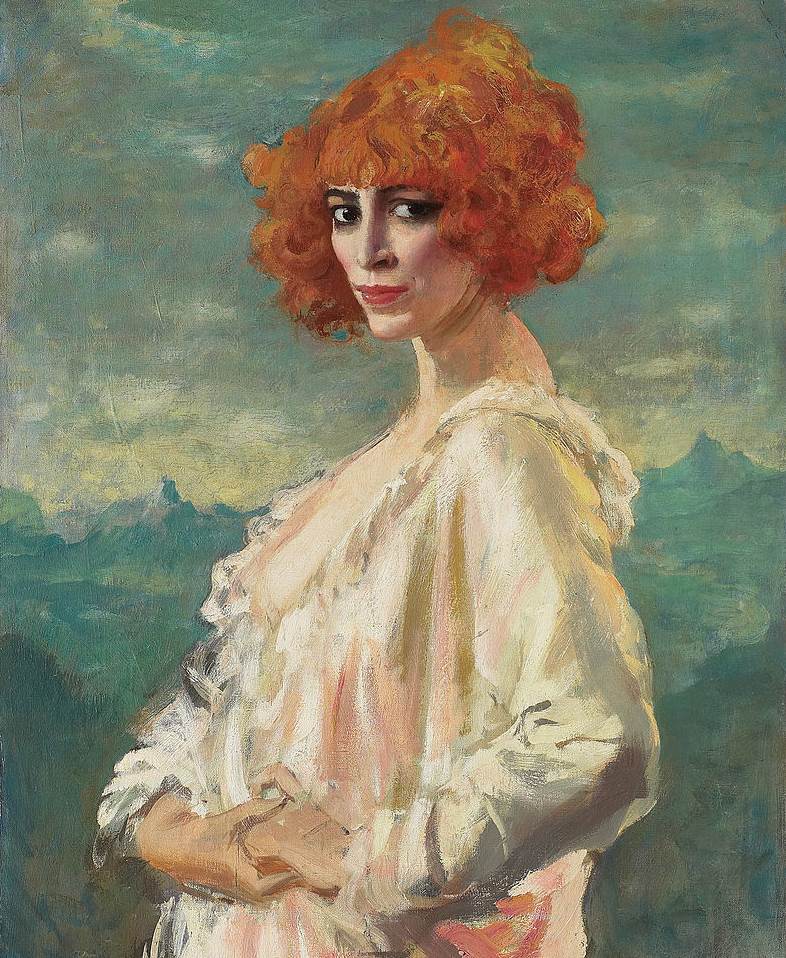The Art Gallery of Ontario is a huge art museum in the Grange Park neighborhood of downtown Toronto, Ontario, Canada.
It’s situated just north of Grange Park and has a history that dates back to its foundation as the Art Museum of Toronto in 1900.
It was renamed the Art Gallery of Toronto in 1919 before getting its current name in the year 1966. It’s housed in a building that has a total exhibition area of 45,000 square meters (480,000 square feet).
The museum has been expanded multiple times throughout the 20th century and underwent a major facelift between 2004 and 2008 with a design by renowned architect Frank Gehry.
The museum is visited by nearly a million visitors, a number that makes it the third-most visited museum in Canada.
Below, you’ll discover some of the most famous artworks on display at the Art Gallery of Ontario. These are objects at the AGO that you simply can’t miss during your visit.
1. Massacre of the Innocents – Peter Paul Rubens
- Date created: 1610
- Dimensions: 142 × 183 centimeters (56 × 72 inches)
The Massacre of the Innocents is one of the ultimate masterpieces by Peter Paul Rubens (1577-1640), the Flemish artist who defined the Baroque style of painting during the 17th century. This remarkable painting exemplifies his style of exaggerated drama and motion.
The painting depicts the Biblical story told in the Gospel of Matthew in which children below the age of two were massacred near the town of Bethlehem. Rubens produced a second version of this subject just 2 years before he passed away and this work can be found at the Alte Pinakothek in Munich, Germany.
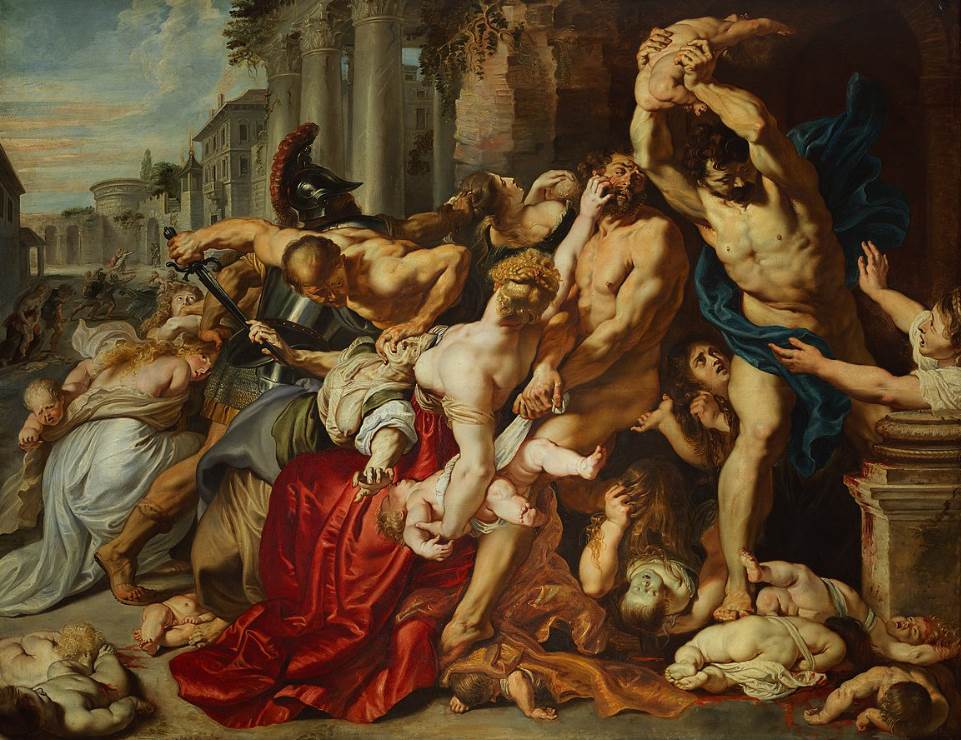
2. Corpus – Gian Lorenzo Bernini
- Date created: 1655
- Dimensions: LIfe-sized
Corpus is the title of a sculpture by Gian Lorenzo Bernini (1598-1680), one of the leading Baroque sculptors and architects of the 17th century. The bronze sculpture was completed in 1655 and remained in the artist’s private collection until he passed away in 1680.
What’s remarkable about this particular sculpture is that it was long believed to have been sculpted by an unknown French sculptor. It wasn’t until more research was done in 2004 that it was identified as the long-lost work by the hand of the Baroque master.
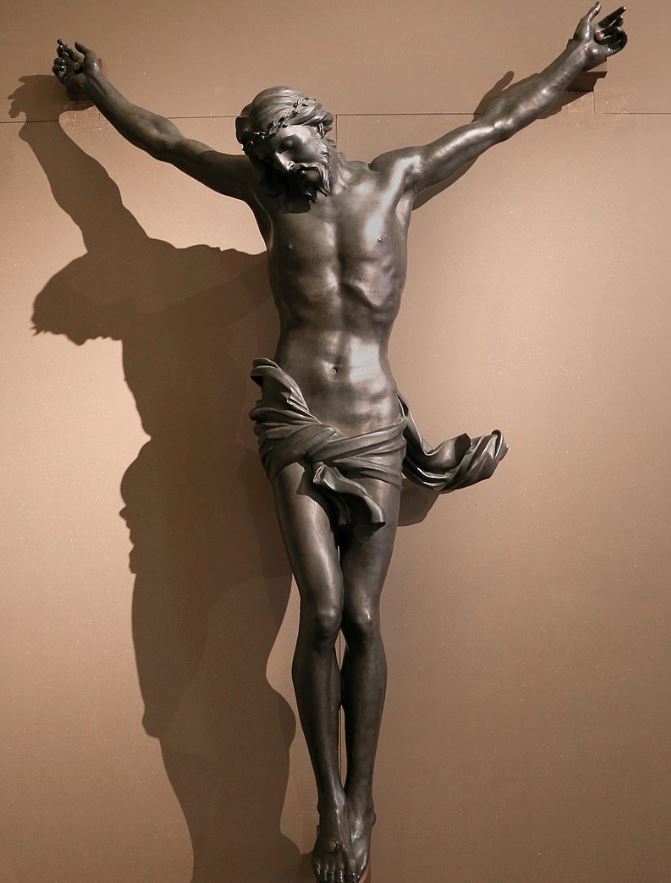
3. Scene in the Northwest: Portrait of John Henry Lefroy – Paul Kane
- Date created: 1845-1846
- Dimensions: 55.9 x 78.7 centimeters (22 x 30.9 inches)
Scene in the Northwest: Portrait of John Henry Lefroy is a painting also known as “The Surveyor.” It was painted by the Irish-born Canadian artist Paul Kane (1810-1871) and depicts a British explorer named John Henry Lefroy while he conducted a successful expedition to map the Magnetic North Pole.
Lefroy returned to Toronto after this success and he was painted shortly after this return. The painting is one of the most famous works in Canadian history. Despite its relatively small size, it was sold for C$5.1 million back in 2002, the highest price paid for a Canadian painting at the time.

4. Young Country Girl Dancing – François Boucher
- Date created: 1765-1770
- Dimensions: 46.2 x 29.2 centimeters (18.18 x 11.49 inches)
Young Country Girl Dancing is a red and white chalk drawing on paper by French artist François Boucher (1703-1770). Boucher was a Rococo artist who became the first painter of the King of France in the 19th century and who produced numerous Rococo masterpieces.
Although he was a prolific painter, he was also famous for his magnificent drawings. They were collected fervently all across Europe during his lifetime, and this magnificent work is a prime example of why this was the case. This work is part of the museum’s prints and drawings collection of the Art Gallery of Ontario.
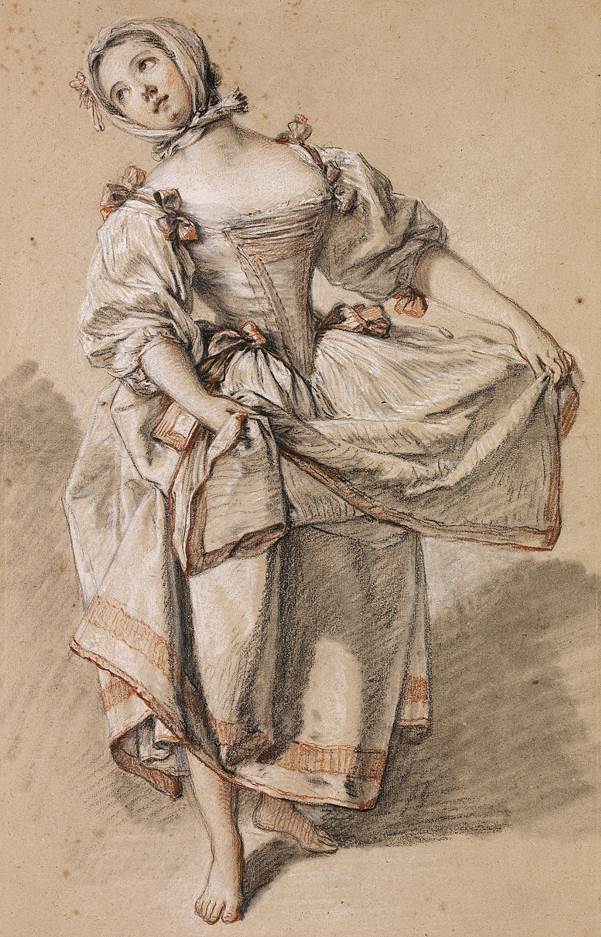
5. Portrait of Isaak Abrahamsz. Massa – Frans Hals
- Date created: 1626
- Dimensions: 79.7 × 65 centimeters (31.37 × 25.62 inches)
Portrait of Isaak Abrahamsz. Massa is one of the many intriguing portraits painted by Frans Hals, the Dutch artist who was highly sought-after during the Dutch Golden Age. Isaac Massa was a close friend of the artist who became extremely wealthy as a merchant.
Because of these notions, he managed to commission several paintings from the artist. Isaak Abrahamsz Massa and Beatrix van der Lean is a painting completed in 1622 that depicts the artist and his wife and that can be found at the Rijksmuseum in Amsterdam. he commissioned another portrait in the year 1635.
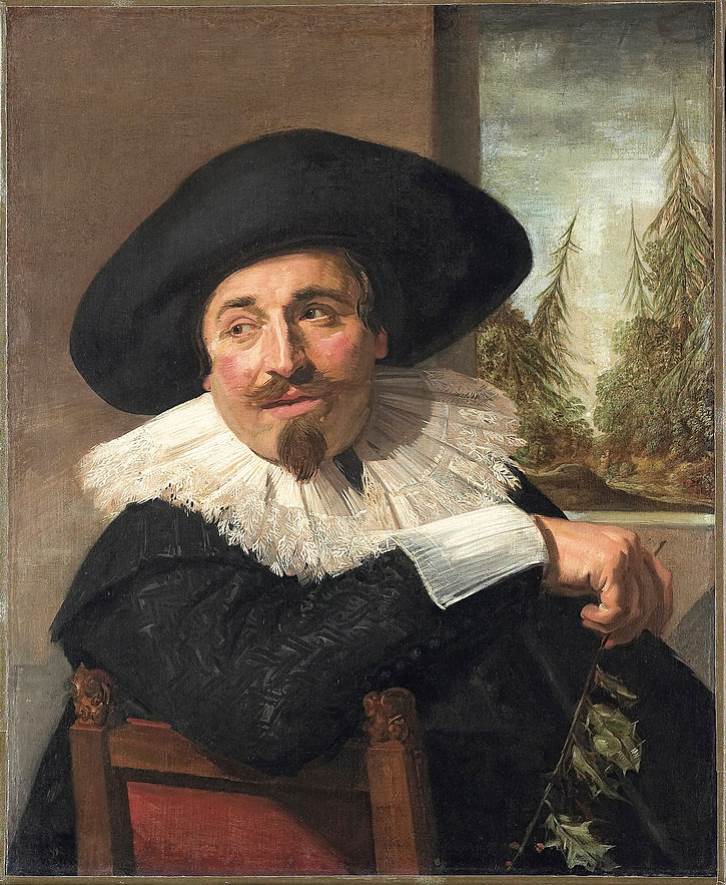
6. The West Wind – Tom Thomson
- Date created: 1917
- Dimensions: 120.7 × 137.2 centimeters (47.5 × 54 inches)
The West Wind is another iconic Canadian painting produced by a Canadian artist named Tom Thomson (1877-1917). It’s probably the final canvas painting that Thomson produced after he passed away during a Canoe trip on Canoe Lake a year later.
Thomson already created a preparatory sketch of this amazing painting during a trip to Algonquin Park in 1916. He slightly moved the pine tree to the right side of the composition. It’s one of his two most famous works, the other one being “The Jack Pine” which is held at the National Gallery of Canada in Ottawa.

7. The Indian Church – Emily Carr
- Date created: 1929
- Dimensions: 108.6 × 68.9 centimeters (42.8 × 27.1 inches)
The Indian Church is the original name of a painting by Emily Carr that was renamed “Church at Yuquot Village” in 2018 by the Art Gallery of Ontario. Carr was one of the Group of Seven artists to which Tom Thomson also belonged and who painted distinctive features in the Canadian landscape.
The painting depicts a church in Yuquot, a small settlement that is also known as “Friendly Cove.” This place is located just west of Vancouver Island in British Columbia in the utmost southwestern part of Canada. The Indian Church is one of Carr’s most reproduced paintings.
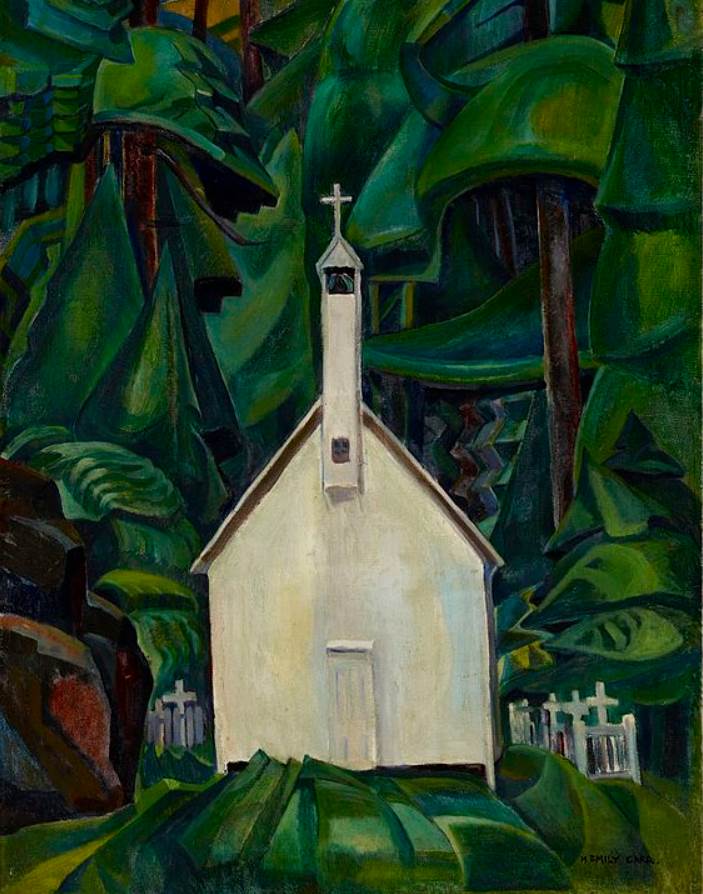
8. Young Woman with a Lapdog – Rembrandt van Rijn
- Date created: 1665
- Dimensions: 81.3 x 64.1 inches (32 x 25.2 inches)
Young Woman with a Lapdog is a painting by Rembrandt van Rijn (1606-1669), the Dutch master of the Baroque era. It was painted during the final years of the artist’s life. It’s considered to be one of the best examples of the late style of the man who is considered to be one of the best Dutch artists in history.
The identity of the depicted woman was long believed to have been the artist’s daughter-in-law Magdalena van Loo (1641–1669). There was no consensus around this conclusion among art historians so it’s now described as a painting of an unidentified woman.
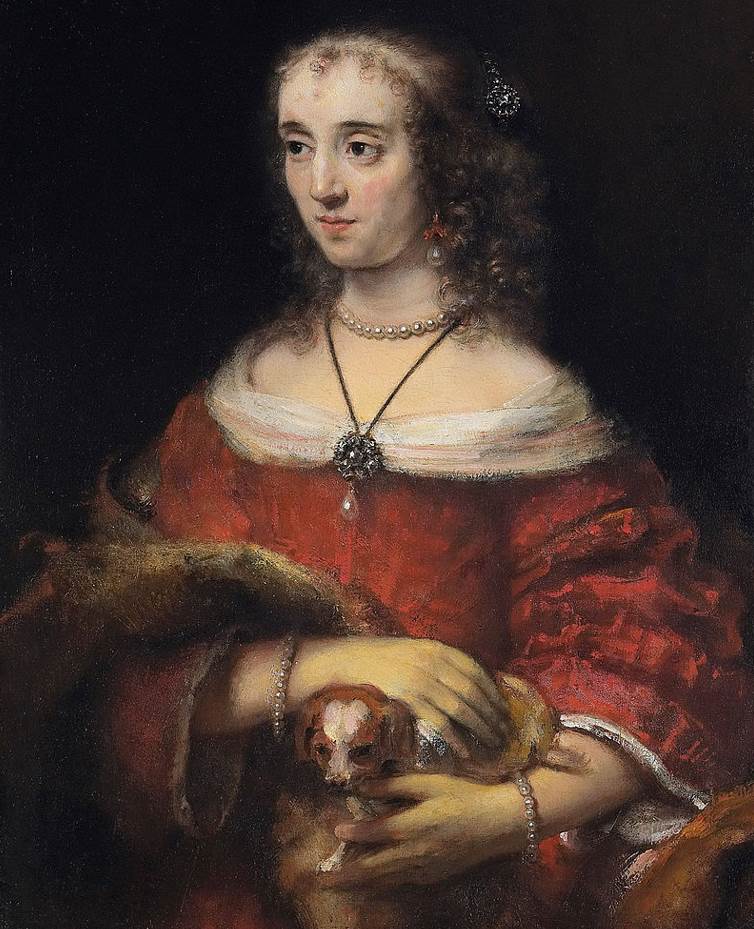
9. I Am Half-Sick of Shadows, Said the Lady of Shalott – John William Waterhouse
- Date created: 1915
- Dimensions: 100.3 x 73.7 centimeters (39.4 x 29 inches)
I Am Half-Sick of Shadows, Said the Lady of Shalott is a magnificent painting by English artist John William Waterhouse (1849-1917). It’s one of several paintings that depict a scene from a poem written by 19th-century poet Alfred Tennyson (1809-1892) titled “The Lady of Shalott.”
The title of the painting is taken from the final 2 lines of the 4th verse of the second part of Tennyson’s poem. An earlier painting titled “The Lady of Shalott” (1888) is on display at Tate Britain in London. Another work titled “The Lady of Shalott Looking at Lancelot” (1894( is part of the collection of the Leeds City Art Gallery.

10. Marchesa Casati – Augustus John
- Date created: 1919
- Dimensions: 96.5 × 68.6 centimeters (38 × 27 inches)
Marchesa Casati is a painting by Welsh painter Augustus John (1878-1961) that depicts Luisa Casati (1881-1957). She was a rich Italian patroness of the arts in the 20th century who was reportedly one of the wealthiest women in Italy at the time.
Augustus John met the woman at a party in Paris and the two became lovers. John described the painting as an attempt to depict her flamboyant, yet reserved nature, even though she was known to be promiscuous.
